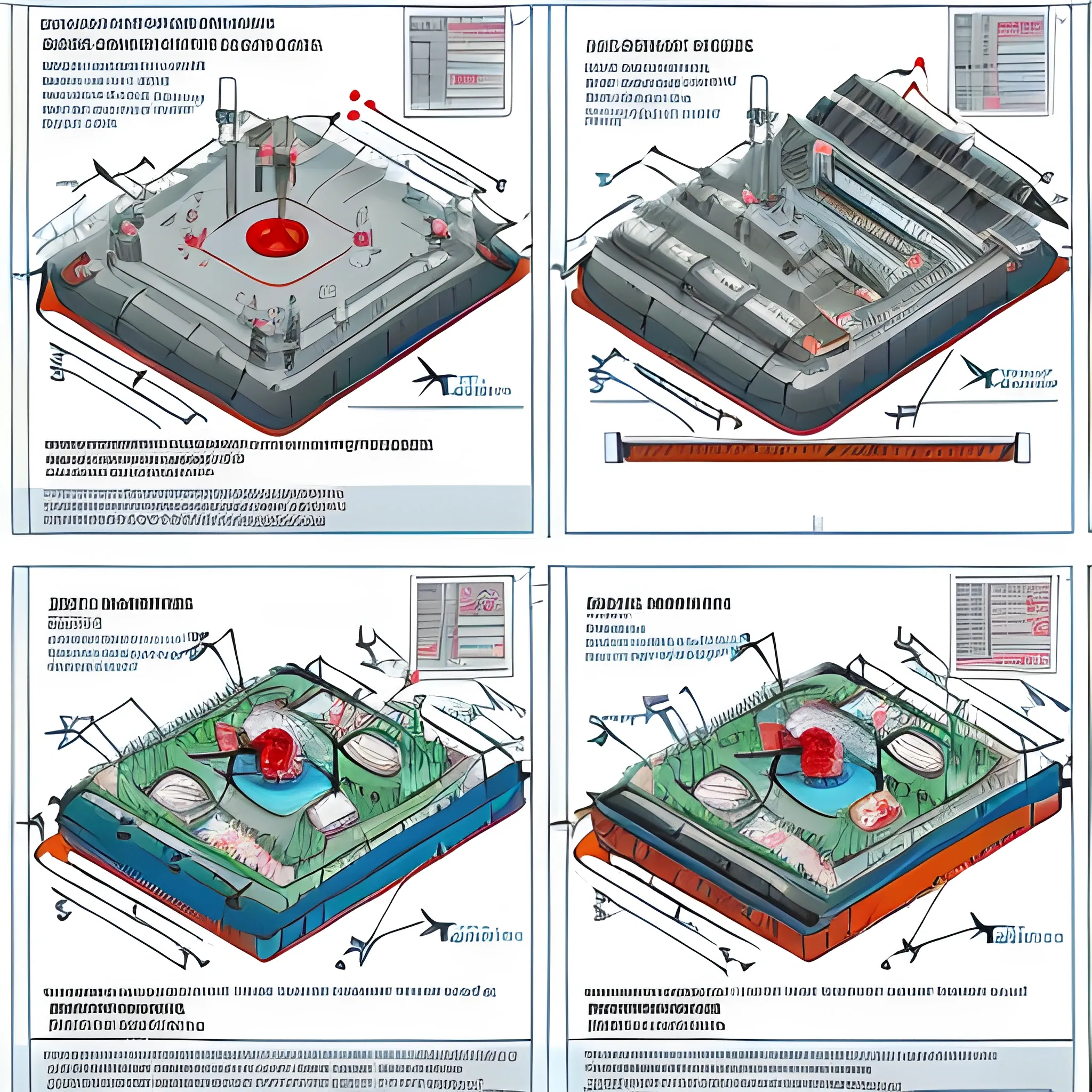Positive Prompt: "A detailed technical illustration that shows two key stages of oil well operation

Positive Prompt: "A detailed technical illustration that shows two key stages of oil well operation using modern and clear visual design. On the left side , the 'Heat Carrier Injection' process is depicted. A pump jack , widely used in the oil industry to move liquid from the well , is shown on the surface. Red arrows highlight key steps in the process. The first step is the plunger lift , which plays a crucial role in the operation of the pump. This process is facilitated by lifting the plunger inside the pumping equipment in preparation for the injection. The second step involves securing the tubing column to a suspended plug , an important measure to ensure the temporary closure of the well and prevent unwanted discharge while preparing for the heat carrier injection. Subsurface , the illustration shows components like the tubing and working rods involved in this process. The entire system is presented in cross-section to demonstrate how it functions in real conditions , providing a deeper understanding of the equipment interaction during heat carrier injection. On the right side of the illustration , the 'Production Phase' is shown. The pump jack is again depicted on the surface , but now the focus is on the oil extraction process. Arrows indicate several important operations. First , the dismantling of a solid ring is shown , which is removed to prepare the well for operation. Next , the installation of a polished rod is highlighted , an important component of the pumping system that allows for effective force transmission for the pump's operation. Finally , the lowering of the plunger is illustrated , which initiates the system's operation in extraction mode. The cross-sectional view of the well illustrates how the pumping system elements work during oil extraction. Specifically , equipment such as the SPR-57 cylinder and plunger are highlighted as crucial for ensuring oil production. All elements are clearly labeled with descriptions , making it easier to understand the processes and equipment. The illustration is designed in a modern style with clear lines and bright colors to simplify the perception of complex technical processes. All key operations are marked with explanatory arrows , and labels help quickly orient the viewer on the actions being performed at each stage. Both surface and subsurface equipment are represented in cross-section , providing a comprehensive understanding of all stages of well operation. This illustration is suitable for use in educational and professional materials within the oil and gas industry , as it provides a visual and understandable representation of the heat carrier injection process and subsequent oil extraction." Negative Prompt: "The illustration lacks sufficient detail , reducing its practical value for technical specialists and engineers. Firstly , key components of the equipment , such as the tubing , column pipes , and plunger , are presented schematically and without explanatory labels , making it challenging to understand specific processes and steps. Important stages , such as the plunger lift or the dismantling of the solid ring , are depicted too simplistically , and due to the lack of detailed indicators , it is unclear how these operations are carried out. The subsurface part of the equipment in cross-section is also inadequately detailed: there are no precise labels for all layers and components necessary to understand the complete structure and system interactions. The SPR-57 cylinder , which is a crucial part of the production process , is not visualized with sufficient clarity , potentially leading to misunderstandings of its functions and role in the process. Additionally , there is no clear indication of the flow of fluids , such as the heat carrier injection or liquid circulation. The red arrows used to highlight key processes are not sufficiently informative: their trajectory may confuse the user , as they do not clearly point to specific elements of the system , and their placement on the diagram appears cluttered. This complicates the perception of the overall logic of the processes. As a result , the illustration appears superficial and unsuitable for use in professional technical instructions or educational materials. Finally , the overall design of the illustration is outdated , which diminishes its visual appeal. Modern illustrations require cleaner , clearer graphics with bright and unambiguous indicators and explanatory captions to enhance clarity and ease of understanding , which is lacking in this case. All these factors make the illustration less useful for engineering tasks and necessitate revisions to meet contemporary quality standards in the oil and gas industry." These prompts provide a comprehensive overview of both the strengths and weaknesses of the illustration. ,
{ "seed": "593853183", "steps": 30, "width": 512, "height": 512, "version": "SH_Deliberate", "sampler_name": "k_dpm_2", "guidance_scale": 7.5 }
Created on: 10/5/2024, 12:15:34 PM